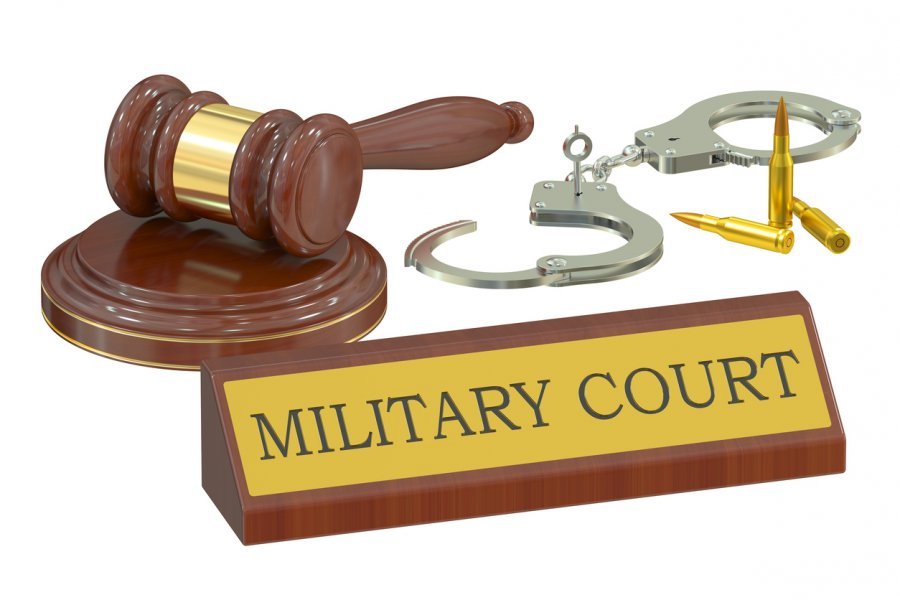While military courts share similarities with civilian courts, many of the procedures are different. While the court-martial process isn’t completely unfamiliar, it is imperative to find a lawyer with experience dealing with these courts. This article will outline the entire court-martial process.
The Laws
A court-martial does not prosecute violations of federal or state criminal codes. The Uniform Code of Military Justice (UCMJ) is the rule of law in military courts. Just like state and federal laws, the UCMJ contains a long list of criminal offenses. The UCMJ contains rules for offenses such as murder, sexual assault, and stealing. However, there are additional rules like disobeying an officer that the UCMJ covers.
Types of Court-Martial
There are three types of court-martials. However, before the soldier can be court-martialed, an Article 32 hearing must be held. An Article 32 hearing is similar to a grand jury. An investigating officer reviews all of the evidence and makes a decision about proceeding with the court-martial process. The defendant can also present their evidence and cross-examine the prosecution’s witnesses. If the investigating officer decides that there is enough evidence the case proceeds.
Summary Court-Martial
A summary court-martial is rare these days. This court-martial process is the lowest level of UCMJ offenses. However, most of these offenders are given the option of an Article 15 proceeding. An Article 15 hearing is a nonjudicial punishment. Therefore, the defendant will receive no criminal record in the event of a conviction. A summary court-martial is slightly different because it is a jury trial and can result in a federal conviction.
The maximum penalty that a summary court-martial can impose is:
- 30 days of confinement or hard labor without penalty.
- Forfeiture of 2/3 of pay for one month.
- Reduction to E-1, the lowest pay grade.
Special Court-Martial
The second court-martial process is a special court-martial. Special court-martials usually try offenses of medium severity. These courts-martial have a judge, jury, and prosecuting and defense attorneys. The jury, also known as a panel, is made up of at least three military members.
The maximum penalty that a special court-martial can impose is:
- 12 months of confinement in a military prison.
- Forfeiture of 2/3 pay for up to 12 months.
- Reduction to E-1, the lowest pay grade.
- Lastly, a special court-martial can discharge the soldier for misconduct.
General Court-Martial
The third court-martial process is a general court-martial. A general court-martial usually hears the most severe criminal offenses. Murder, rape, and robbery are examples of charges that a general court-martial will hear. There are five jurors or panel members in a general court-martial instead of three. The court can impose any sentence it chooses including life in prison as well as death.
The Court-Martial Process: Judge and Jury
One of the biggest differences between a civilian court case and a court-martial is the judge. The judge in a court-martial is from the ranks of the Judge Advocate General Corps. These judges are usually veterans of military courtrooms. Almost every military lawyer serve as both prosecutors as well as defense attorneys. Experience from both sides of the courtroom allows them to judge cases more fairly. The judge will make rulings during the trial on things such as the admissibility of evidence. However, the defendant can challenge these rulings through the military court of appeals.
Secondly, the jury, which is also known as a panel is also different in a court martial. In a court-martial, the panel is hand picked by the convening authority. The convening authority is the commander who is responsible for the soldier facing a court-martial. The defendant in the court-martial has some say in the panel. The defendant can choose to forgo a panel altogether and allow the judge to deliver the verdict in the case. Also, the defendant can request that the sergeants comprise at least one-third of the panel. Sergeants are enlisted personnel who have worked their way up the ranks of their respective military branch. The court-martial only requires that two-thirds of the jury votes guilty, to result in a conviction. In capital cases, there must be a unanimous verdict.
After the verdict, the convening authority reviews the case as well as the punishment. The convening authority can decide whether or not to alter the punishment.
New York Military Attorney
Troy Smith has experience defending people from the court-martial process. He will use his knowledge and expertise to help you navigate through one of the most difficult times in your life. Also, Attorney Smith can help you formulate the best defense for your case. Contact New York military attorney Troy Smith today.












